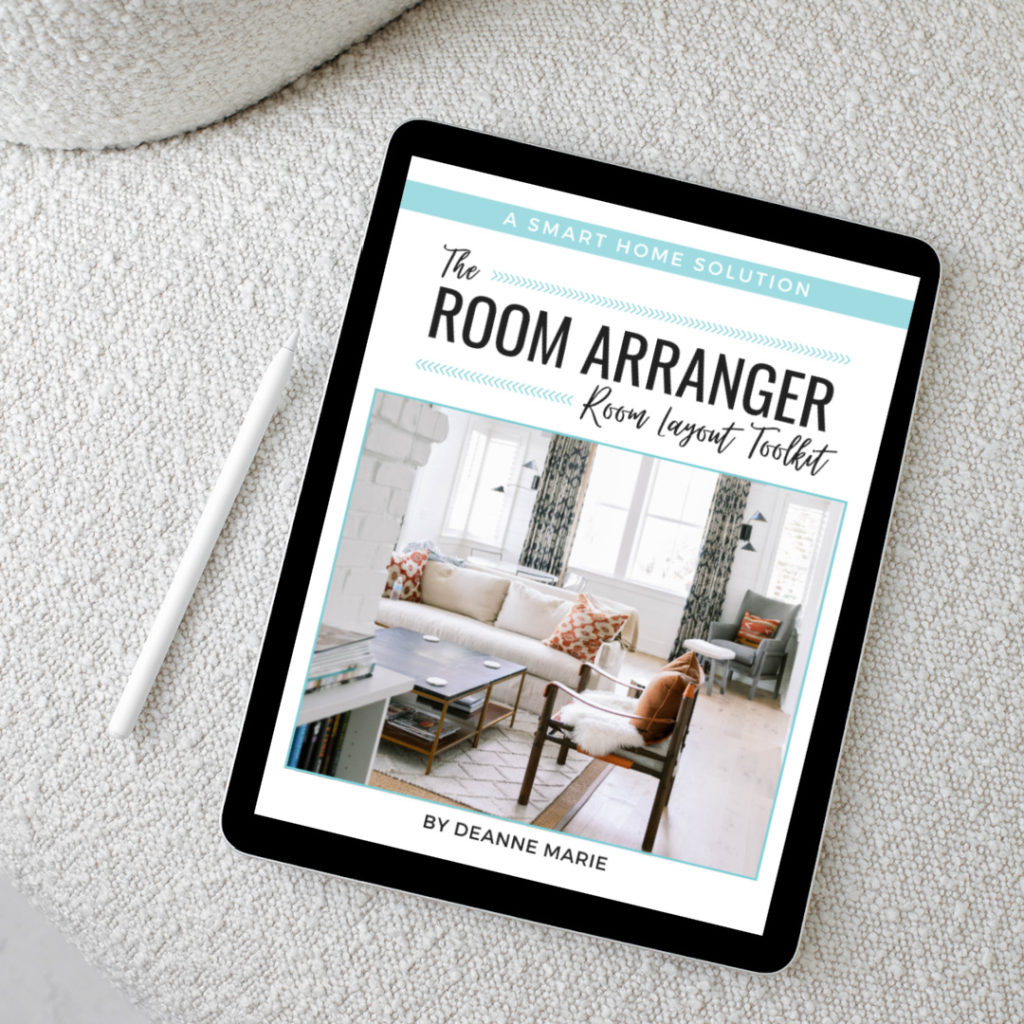
Let’s face it: when you’re making over a room, you have a lot of design decisions to make. Everything from paint color to fabrics, lighting, furniture and floor coverings. It can feel overwhelming!
When it comes to the process of design, and especially making design decisions, one of my goals is to be completely transparent. And when I can, to transfer my experiences, tricks, thoughts and especially my mistakes to you to help make your home decorating projects a little easier.
Something that I’ve run into in my design process is having an idea … and then nothing happens. I can’t get started. It’s just not happening. I have a great “what” (“Ooh! Let’s paint the kitchen!”) but lack clarity in the “how” it’s going to come together. If you can relate, read on! I’ve got some tips to get you unstuck and back on track with your design decisions.
Lots of ideas, no decisions
A great example was choosing a color to paint my kitchen. When I moved into my home, I knew I wanted to paint the kitchen. I was thinking some shade of green. Maybe sage. So, whenever I was in a paint store or hardware center, I would bring home a paint swatch or two and stick them up on a wall in the kitchen. Over time I amassed quite a collection of swatches from mint to celery to kale and every shade in between. And yet, the walls remained beige. Nothing was “doing it” for me.
Then one day about three years after I moved in, I came home, looked at the wall of green swatches and it hit me: “Orange!! I’m painting the kitchen orange!” I literally went to Home Depot that second and bought some terracotta paint and painted the wall that weekend.
The idea of painting the kitchen had been percolating until just the right spark came along. I realized that subconsciously I had been tuning in to orange. I’d been adding orange pieces to my wardrobe. I was hiking a lot in the Red Rock recreation area. My mind finally made the connection, and I’m so glad it did!
The same thing happened with my bookcases. I’d been wanting to update the teak bookcases in my home office for over a year. I knew I could do something to the backer board to make them pop, but what? Paint? Mirror? Decoupage a map? Nothing was sparking. Then a one day I was in Target and saw a new product—peel and stick wall covering—and boom! Just like that, the “how” took form and I took action.
How to get unstuck
So if you have a “what” – an idea for a room you’d like to freshen up or a piece of furniture to revamp, or whatever it is – and you’re not sure where to start, here some ways to jumpstart your inspiration and get to your “how” faster
1. Set your intention.
Have you ever noticed that when you want something, you see it everywhere? Say you’re looking for a new car and you’re thinking of a Honda, everywhere you look you see a Honda? Our minds are incredible at receiving and sorting hundreds of thousands of stimuli a day. When you calibrate it to “look for patio furniture” for example, you might be amazed at what ads you see or conversations you overhear.
2. Go online.
Websites like Houzz and Pinterest are great for generating inspiration, if you know what you’re looking for. Otherwise, they can be overwhelming. If you’re already on Pinterest, start a new board dedicated to your room or project. Then, do a targeted search using the site’s search engine. When you see something you like, whether it’s a whole room or a color or a piece of furniture, pin it to your board. (Tip: When browsing Pinterest, set a timer to keep yourself from getting sucked into the time-wasting vortex. Here are more tips to free yourself from digital distraction.)
Many retail websites and blogs have a “Pin it” button so you can pin from other sites as well. And, when you’re out in the real world and you see something that inspires you—even if you’re not sure how it would translate into your space—snap a photo with your smartphone and upload it to your board.
3. Start a file.
Before there was Pinterest, there were file folders. I still find inspiration in low-tech places like catalogs and magazines. Keep clippings and other tangible inspiration items, like fabric swatches or paint chips, in a folder for easy reference.
Be patient with your design decisions
Once you’ve worked through those tips, look at your file and your Pinterest board. See what your images have in common. Maybe it’s a color palette, or a style of furniture. These are the clues to what you really want in your space.
I recently received a call from a client for whose living room I created a design plan for almost a year ago. She let me know she finally found the perfect sofa and slipper chairs to add to the other elements she’d already purchased. It seemed like she felt bad that it took so long, but sometimes that’s the process. From our virtual e-design work together she knew exactly what she wanted so when she found it, she took action.
All that to say, try to be patient with your design process. As Jane Sherwood Ace aptly put it, “Home wasn’t built in a day.”
It can take time, but in the end it’s worth it to have a home that welcomes you at the end of the day like a trusted companion on this journey of life.


 Hi! I’m Deanne Marie – designer, author, attorney, travel enthusiast and everyday goddess. I love showing other single professional women how to create a home that is as comfortable as it is stylish, and have joy-filled, everyday goddess kind of life.
Hi! I’m Deanne Marie – designer, author, attorney, travel enthusiast and everyday goddess. I love showing other single professional women how to create a home that is as comfortable as it is stylish, and have joy-filled, everyday goddess kind of life.
